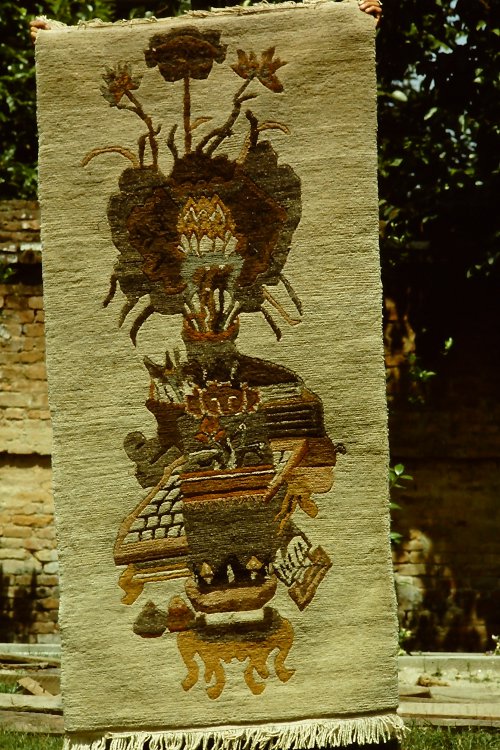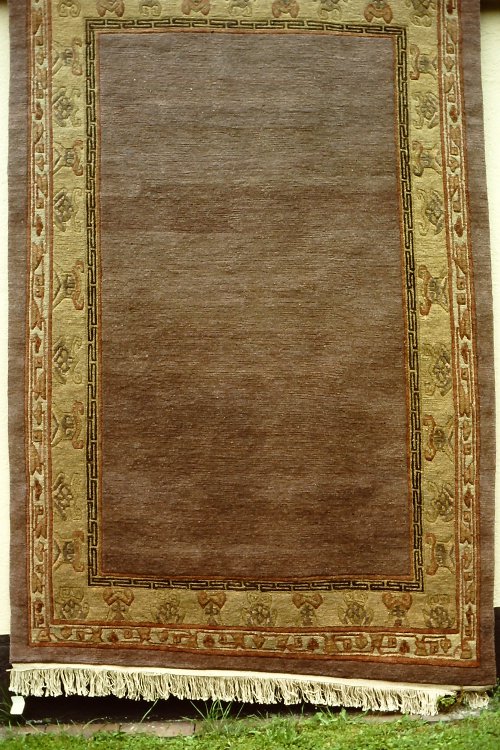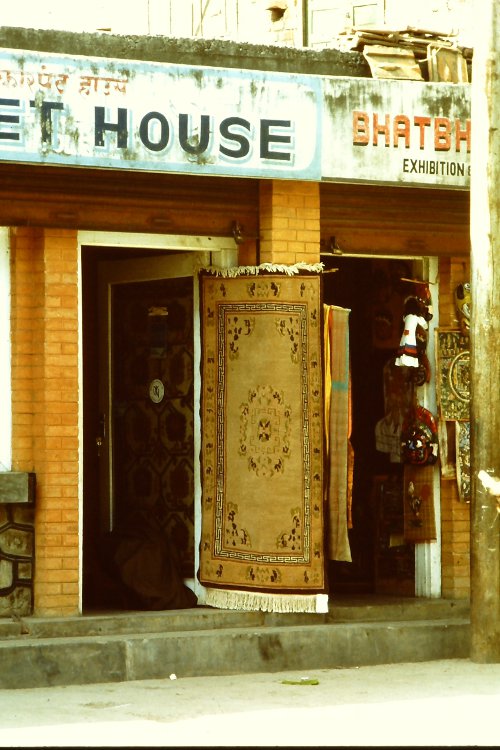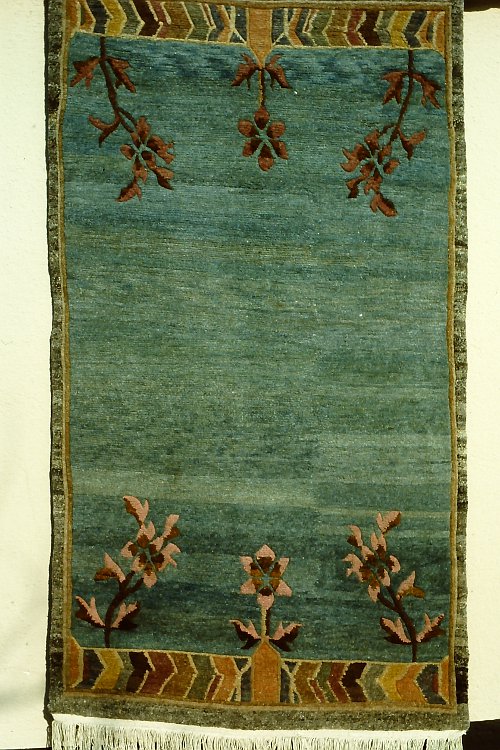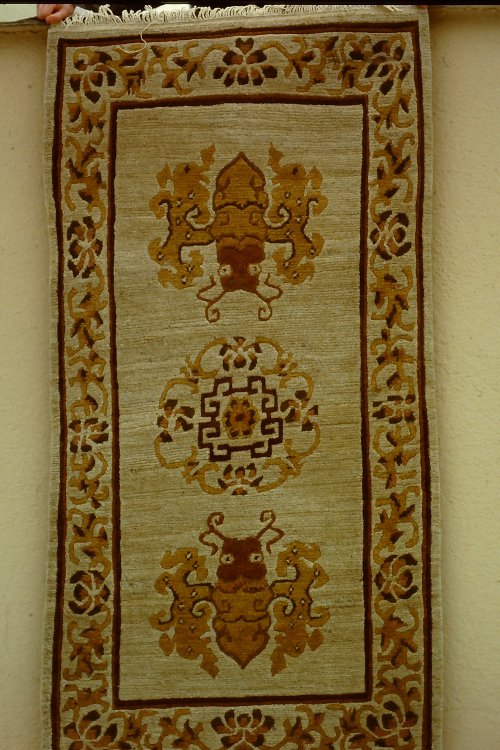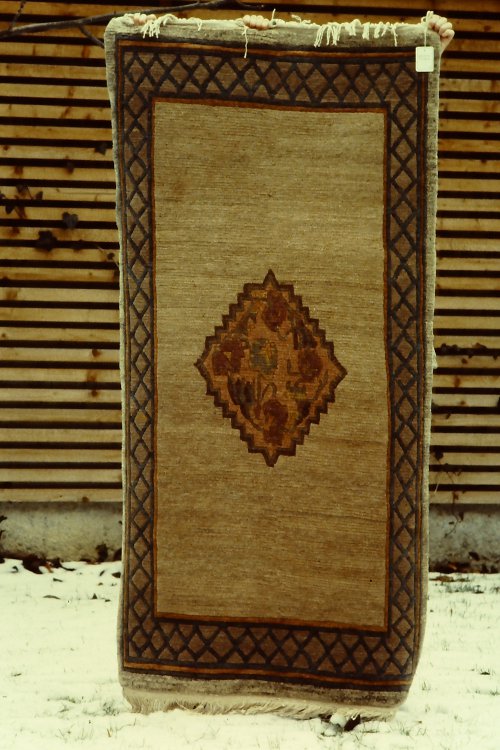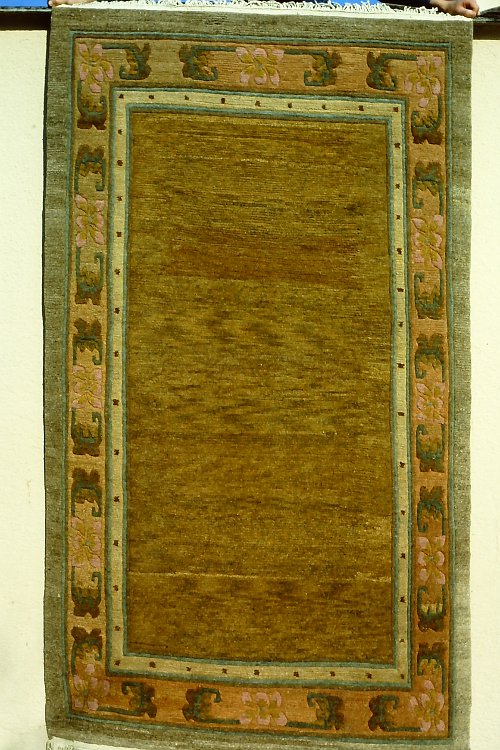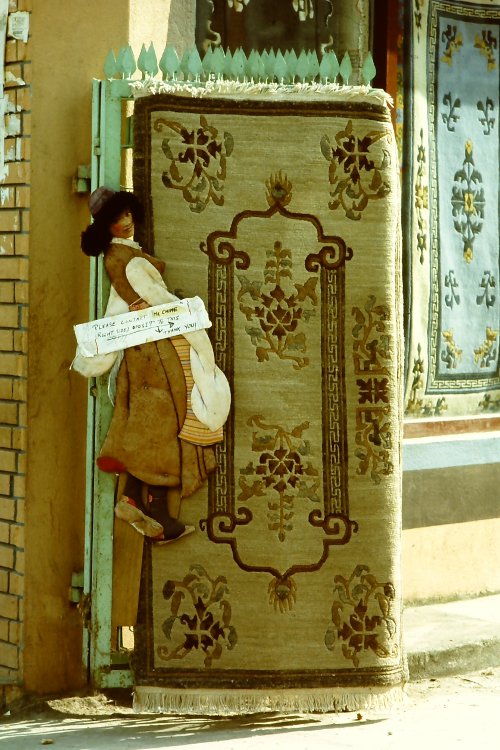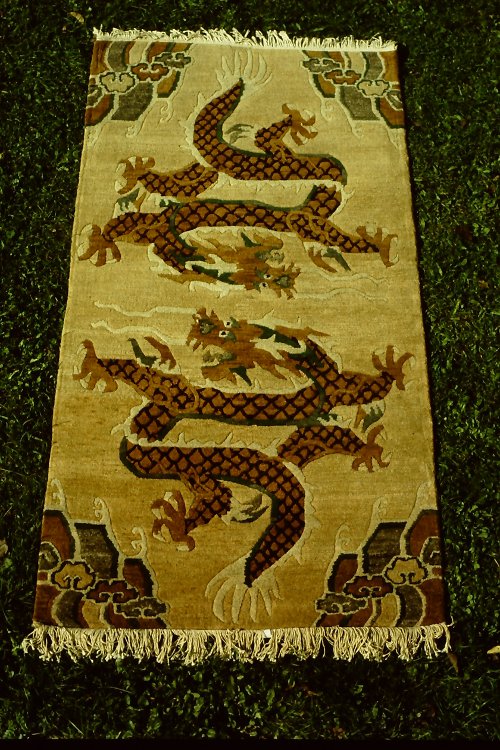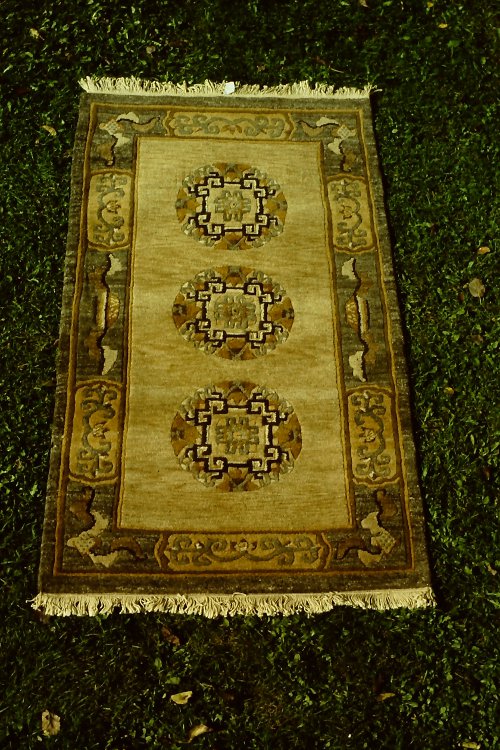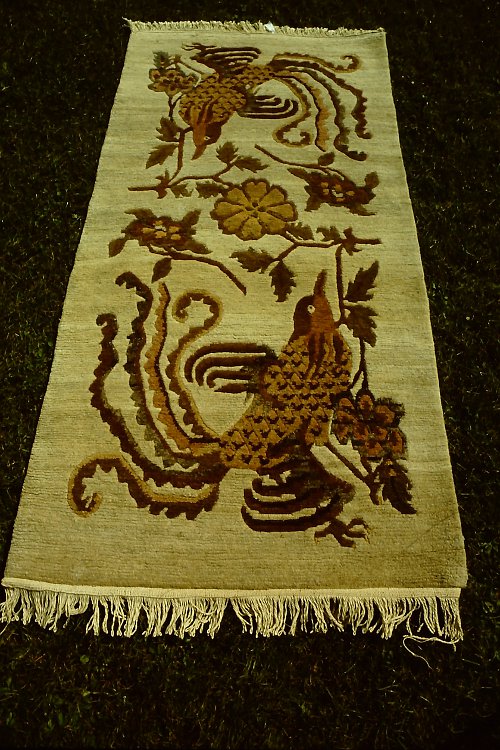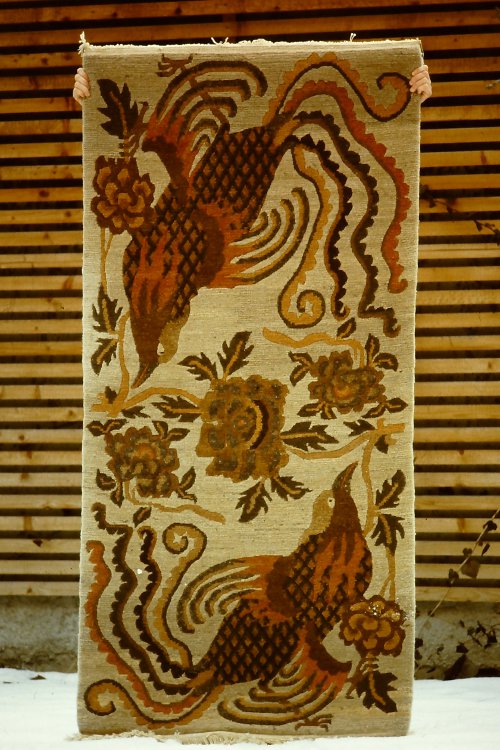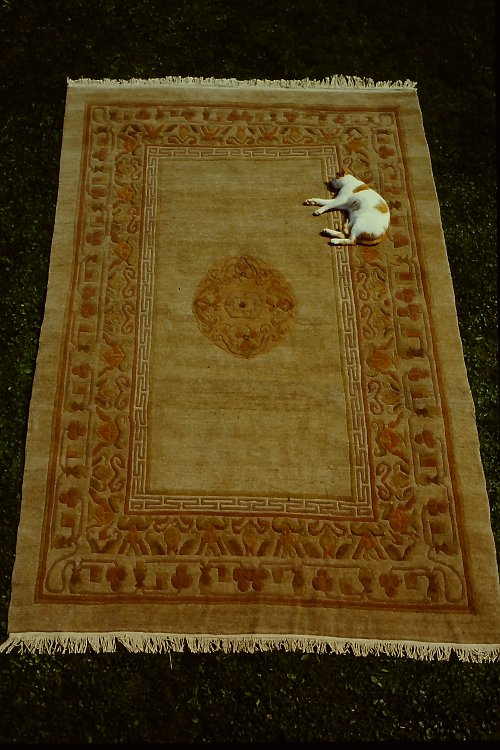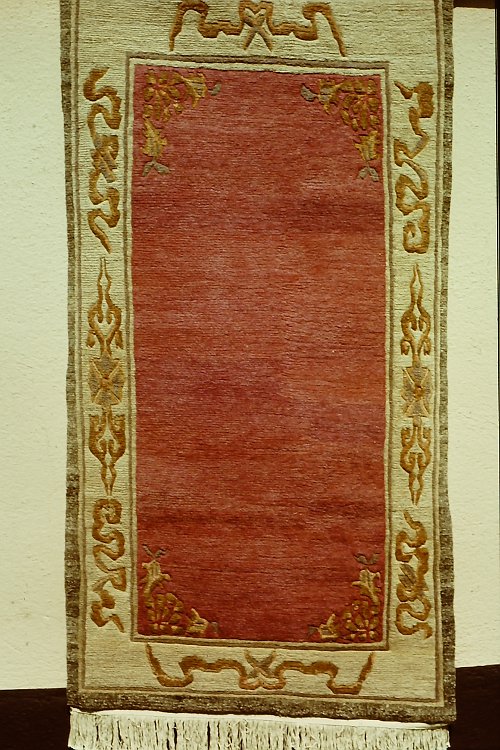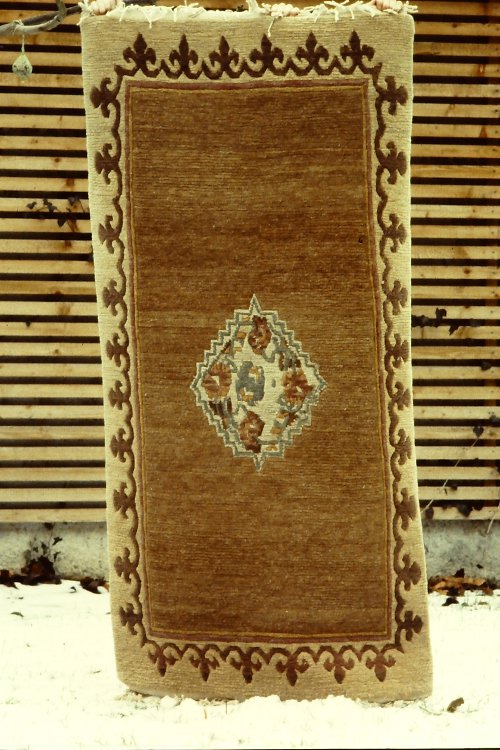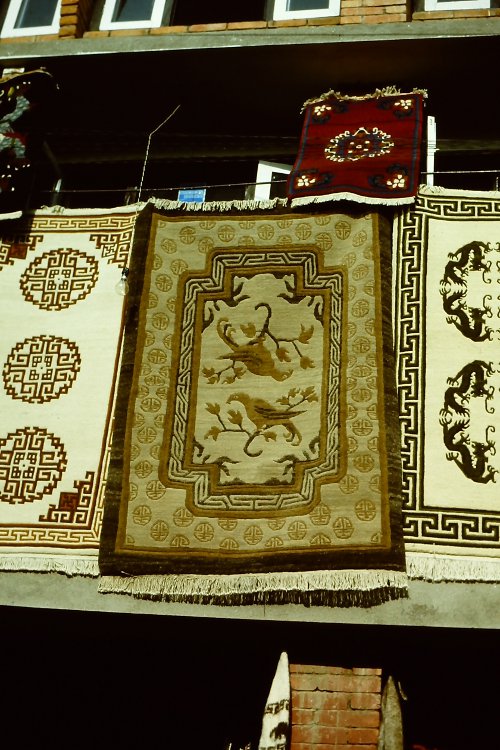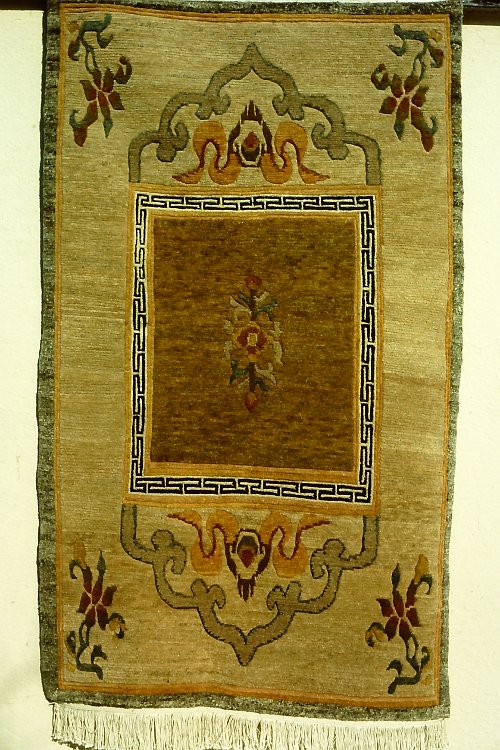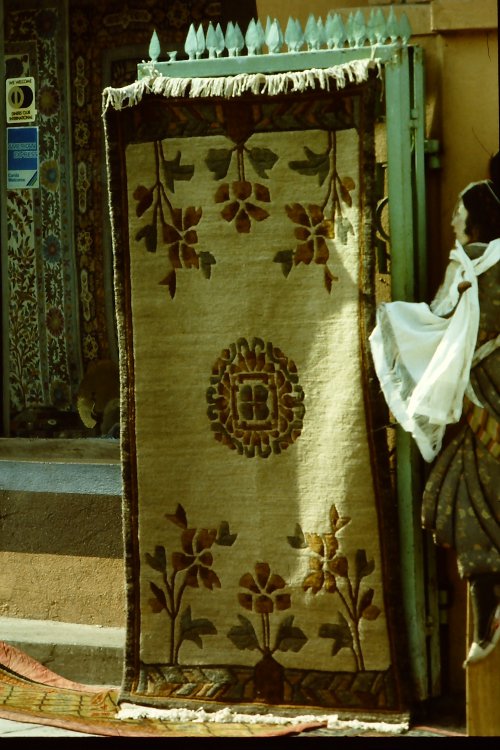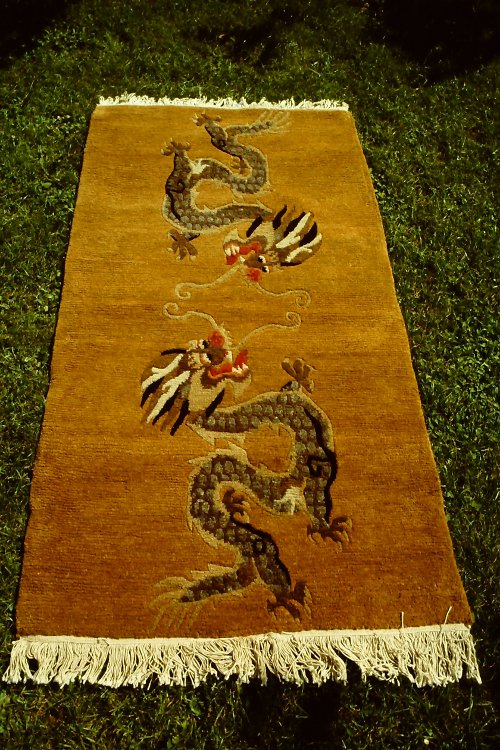| < Prev | Next > |
|---|

This article is about the use of vegetable and chemical colors in Tibetan rugs, their characteristics and their differences.
Tibetan Rugs - a Product in a Fast Changing Market
The making of Tibetan rugs has been subject to extremely fast changes in designs, colors and sizes since the first Tibetan refugees started in the early 1960s to make a living by weaving carpets. Today's rug market is a bit like the art market, subject to trends and short-lived fashions. For the Tibetan rug it has been a development from a traditional craft in an isolated nomadic society to a product that now strives for European and American consumers.
Trend for Vegetable Dyes in the 1980s
In the early 1980s started a short-lived fashion for vegetable dyed rugs. The images you see on this page, were taken during these years. Also the designs - characterized as semi-traditional - reflect the market of the early 1980s. The trend towards simplification of the designs is obvious, especially restricting the design elements to the carpet's borders. The boom for vegetable dyed Tibetan rugs was a short one. It waned out in the second half of the 1980s.
Gallery of Vegetable Dyed Tibetan Rugs
These rug images give you a good feeling of what vegetable dyed Tibetan rugs really look like and the limitations in the color spectrum.
Chemical Colors and Tibetan Rugs
Until the late 19th century the Tibetan carpet makers had only vegetable dyes at their disposal with a limited range of colors. No wonder that they welcomed the new, chemical colors coming from India towards the end of the 19th century. Before, the only way to dye wool was by using color pigments obtained from minerals and plants.
The art of dyeing was a highly skilled profession for thousands of years. In many civilizations the dyers organized themselves in guilds and anxiously protected their knowledge against outsiders.
The Invention of William Henry Perkin
In 1856 William Henry Perkin discovered the first synthetic dye stuff when he was actually looking for a remedy against malaria. The new synthetic colors rapidly replaced the old vegetable colors. First of all, they were cheaper to produce, secondly they offered a larger color spectrum in dyeing textiles and for other use, and thirdly, if properly produced the new chemical stuff was light-resistant.
It took until the later 19th century until the first chemically dyed wool arrived from India in the isolated Tibetan empire. The Tibetan weavers eagerly took advantage of the possibilities that the new, synthetic colors gave them. After roughly 1900, most of the commercially produced rugs in Tibet were made with synthetic colors.
What are Vegetable Dyes?
Vegetable colors are made from plants and minerals. Until the invention of chemical colors and the production on a large, industrial scale, colors for textiles could be created only from the ingredients that nature made available.
What are Natural Colors?
Often natural colors are confused with vegetable dyes. The term natural is used for pure sheep wool as it is. The shades are mainly a yellowish white, used as a background for most of the rugs that you see on this page. Other colors are black and a dark brown, both rather rare as most sheep are white.
And there is finally a kind of 'dirty' gray. It does not look nice as a background color and is difficult to combine with other colors in design elements. Therefore it was frequently used for border lines. I remember, in those days in the early 1980s when vegetable rugs were trendy, the carpet producers were forced by their wool suppliers to buy the lesser popular natural wool shades (gray, black) together with the white wool.
Which are Better? Vegetable or Chemical Dyes
Western book writers and self-styled 'experts' will tell you that everything made today does not by far match what was made 50 or 100 years ago. They repeat this mantra again and again, and not only for Tibetan rugs, but all kind of arts and crafts.
For most Himalayan arts and crafts this is as much arrogant as ignorant in my view. I cannot hear this idiotic mantra any more! Whether rugs, thangkas, Nepal statues or Tibetan or Nepali jewelry, today's artisans are still capable of producing excellent top quality. That is not the problem.
When Antique Makes Little Sense
The problem is a lack of demand for newly made top quality. Western buyers whose wallets have the reciprocal size of their brains, are willing to bid easily 20,000 dollar or Euro on a Tibetan statue dated 15th century at auction houses in London, New York, Paris or Singapore. But only few people are willing to spend 500 Euro on a recently made excellent Tibetan statue, made in the same way or even better, all by hand, just as the one dated 15th century.
To conclude this sad chapter of human foolishness, I want to add that there is a high probability that this 'old' piece is in reality a well-made fake of recent origin.
Vegetable or Chemical Dyes?
But back to my provocative question. Are vegetable dyes better than chemical ones? I think the question (at least it is my own question) is stupid. Why stupid? Because these are two different products with different characteristics. Let me point out the differences.
Vegetable Colors will Lose Freshness
I have several vegetable rugs about 30 years old in my own home. Over the years, the colors have faded out a bit, and the rugs overall look a bit dull. Collectors of Japanese prints know this effect of fading colors for art prints made before roughly 1860. Many collectors therefore hide their valuable pieces in collector albums or drawers to avoid exposure to the sun. For Tibetan rugs this makes no sense of course.
It Depends on Your Individual Taste
If you like tone-in-tone color combination, vegetable dyed carpets may be a good option for you. Also for modern designs with large, flat areas without designs, the more uneven character of the vegetable dyed wool gives such pieces an interesting look. But you should like it.
As for myself, I like strong colors. My option are chemical dyes. Unless the colors are of minor quality, they will keep the original color tones nor will the colors run out when washed in water.
Dieter Wanczura, October 2010.




